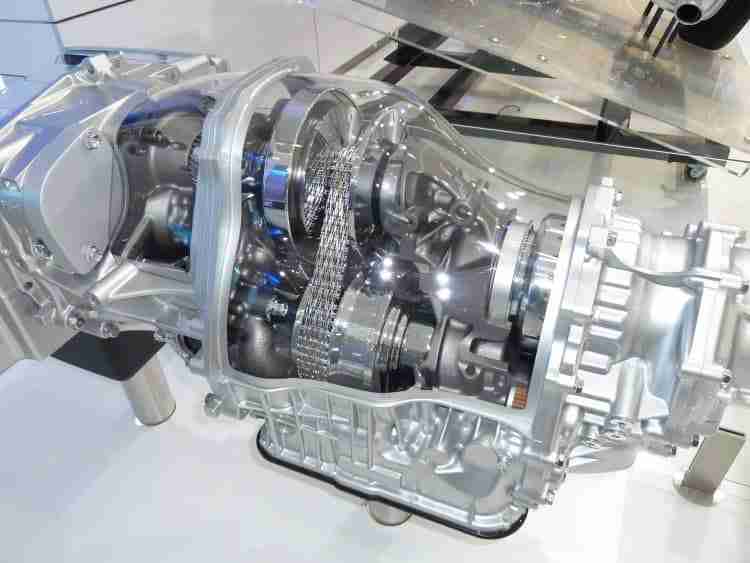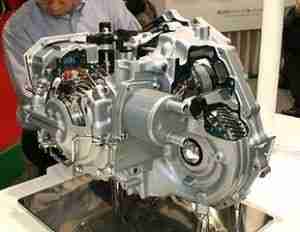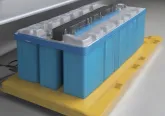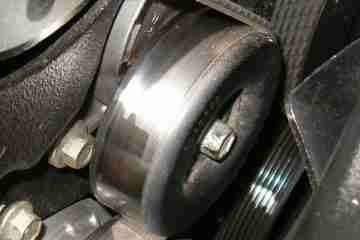How long do CVT transmissions last?

CVTs (Continuously Variable Transmission) are single-speed transmissions that work like traditional automatic transmissions but still are contrastingly different from them. The biggest similarity that CVT and automatic transmissions share is shifting through a range of gears, unlike manual transmissions that only offer a limited number of gear ratios. Understanding the working of CVT’s as well as their pros and cons should be something that a person looking to buy their next CVT car should know.
What exactly is CVT?
A CVT is a very convenient option for those who don’t like manual shift sticks. But one question remains – “if CVT is similar to automatic transmissions, then how is it any different from it, and even more so, what is the need for a transmission that is just a subset of the other”?
Well, the answer is fairly simple as well as a little complicated at the same time. Sure, you use a CVT transmission just like a regular automatic transmission – you just slide the lever from ‘P’ to ‘D’ and everything is sorted. But automatic gears or speeds, if you may, are also limited to a certain number. Automatic transmission only eradicates the need to manually keep shifting the gears when the vehicle reaches the speed limit that is bearable by a particular gear. But even as the vehicle is accelerating or decelerating, you can still feel the momentary pause or lapse when the gears are shifting.
This is where CVT comes into play. A CVT has virtually no gears or infinite gears (whatever gets you ticking). There is just one simple mechanism that keeps shifting the gears up or down without feeling those shifts or the engine idling for a moment. All that you shall notice in a CVT-transmission car is the change in the speed.
How does CVT work?
 We went from up to 6-shift manual cars to up to 10-speed automatic transmissions. Nevertheless, we were still bounded by the number of gears we could have. CVT changes that whole scenario by literally offering you an infinite number of gears for there is no way to tell which gear your car is in in a CVT-transmission car.
We went from up to 6-shift manual cars to up to 10-speed automatic transmissions. Nevertheless, we were still bounded by the number of gears we could have. CVT changes that whole scenario by literally offering you an infinite number of gears for there is no way to tell which gear your car is in in a CVT-transmission car.
But how is this achieved? Well, continuously variable transmissions make use of a mechanism comprising of pulleys and rollers instead of gears. One pulley is connected to the engine and the other to the transmission. Working together, they keep adjusting themselves as per the need and as per the load on the engine to stay in an optimum situation. The tension between the two acts as the desired gear and because the tension among the two can assume infinite values, you get infinite gears at your disposal.
PROS
- Mileage
It should not come as a surprise that CVT transmissions are extremely fuel-efficient. Given that they can adjust their gear ratios instantaneously and have an infinite range of gears, the load on the engine and everything is as minimum as possible thus leading to better fuel utilization.
- Better pickup
Again, owing to the lack of gears, finding and maintain the ideal torque as well as finding the ideal gear ratio and maintaining it is very easy for CVT engines which makes it a lot easier for them to pick up from a static position as well as climb hilly terrains without breaking a sweat.
- Smooth
Without any noticeable gear shifts or pauses in the acceleration, the ride becomes as smooth as butter making it the perfect choice for people who have to commute long distances on a daily basis.
CONS
- Low power
One of the biggest drawbacks with CVT’s is that they have to be designed specifically for different types of engines and with even more precision for the more powerful engines such as four-stroke engines. Doing so for more horsepower and torque on a standard engine just feels too cumbersome and so they are mostly found coupled with the less powerful engines.
- Hard to maintain
The mechanics and design of CVT are too complicated to be handled, maintained, or serviced yourself. For any kind of maintenance or service, you have to drive your vehicle all the way over to a good auto shop or the dealership.
- Doesn’t feel the same
Say what you will but there’s a certain macho factor associated with driving a manual car just because of that feel of changing gears. Even with automatic transmission, some of that feel is retained because you can at least still feel that momentary lapse in the gear shifting. But CVT takes all that fun away and riding one feels nothing less than riding a scooter (the ones without gears).
- Sound
The sound of a CVT transmission is no treat to the ears; if anything it is just plain disturbing. That high-pitched sound and the occasional continuous revving is frustrating at the very least.
- Cost
It should go without saying that the cost of manufacturing CVT transmissions is too damn high which should be crystal clear by the fact that they have to custom-made for different types of engines. And this extra cost has to be borne by you as the customer only.
Longevity
 How long does a CVT last? That’s a question with no fixed answer. It all burns down on the manufacturer and the quality they have retained and even more so on how much it’s taken care of. However, if we have to put a number on it, the average CVT lasts for almost 115,000 miles. You can prolong that number by taking some precautionary steps such as-
How long does a CVT last? That’s a question with no fixed answer. It all burns down on the manufacturer and the quality they have retained and even more so on how much it’s taken care of. However, if we have to put a number on it, the average CVT lasts for almost 115,000 miles. You can prolong that number by taking some precautionary steps such as-
- Don’t be too rough on the transmission. For example, don’t just throw it into straight while you are still backing up your vehicle – it just puts unnecessary load both on the engine as well as the transmission and that’s not good in any way.
- Regularly check and change your transmission fluid. Most CVT vehicles come with instructions in the owner manual on how frequently to change the fluid. If not, then you can check the manufacturer’s site for more information.













No Comment